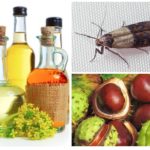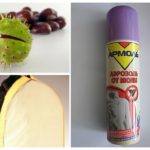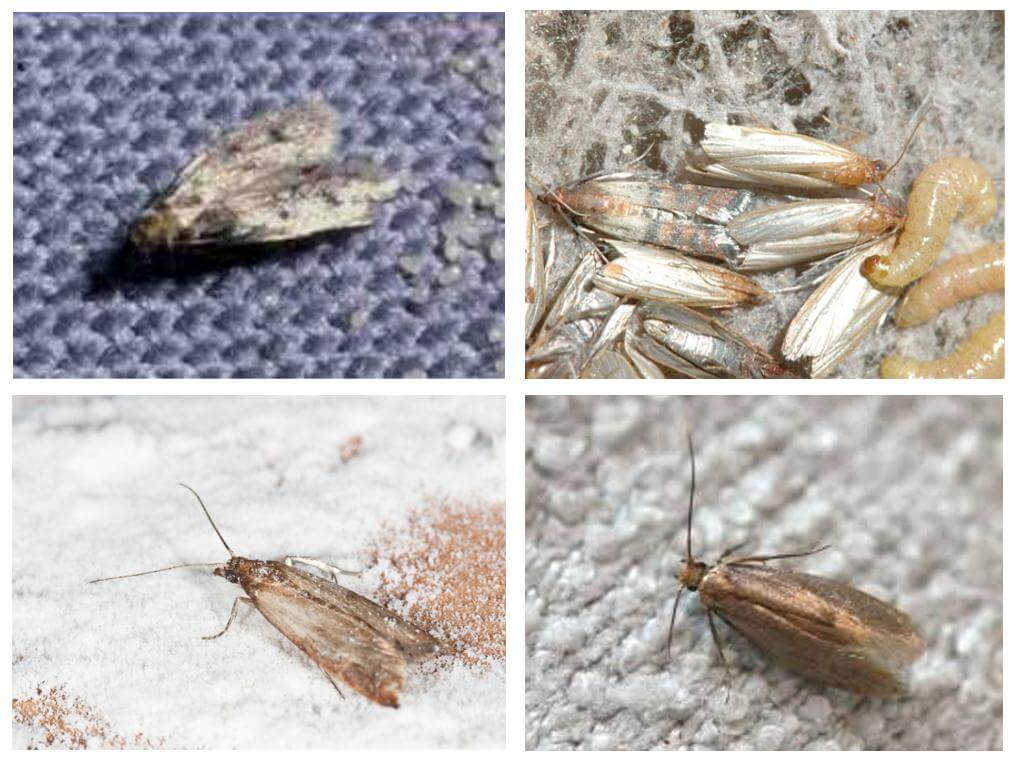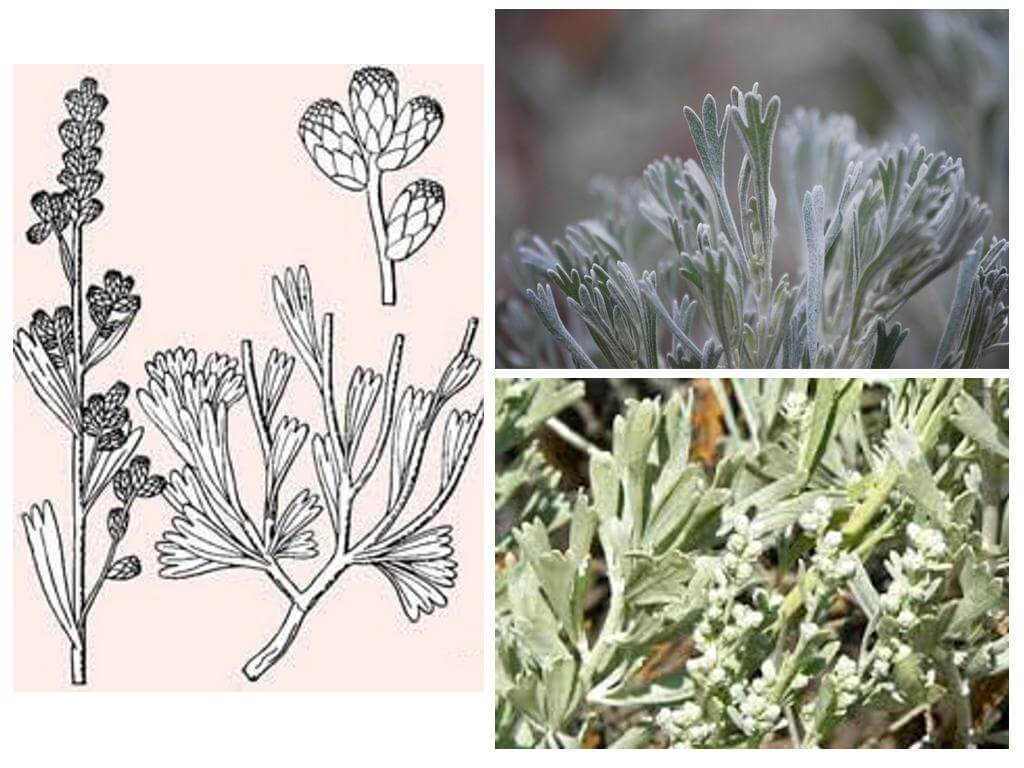What flowers scare the mole
Content
- Clothes and food moth
- Chestnuts and Essential Oils
- Sagebrush
- Moth Herbs
- Plants against moths
- Preventive measures
Among the variety of beautiful bright butterflies moth appearance strongly distinguished by its modesty and inconspicuousness. People fought the voracious insect always. Today naphthalene has been replaced by modern ones. moth chemical control agents. But before endangering the household, you can try to get rid of the moth with the help of plants. Moth grass is an effective and safe remedy.But before hanging bundles of herbs around the house, it is necessary to find out exactly which plant frightens off the mole with its smell and how natural repellents work.
Close acquaintance with the enemy
The family of real moles (Tineidae) numbers 2000–3000 species. These butterflies are found everywhere, eating dry mushrooms, grains containing animal keratin residues (fur, wool, down, feather). You can meet members of the family in the holes of animals, bird nests, bat caves. But for a person the most unpleasant neighbors in the apartment are clothes, fur coat, carpet and food mothwhose varieties prefer to live in the kitchen: cereal, fruit, flour.
Interesting!
A reliable fact is described when the mole ate dried snake venom without harm to itself. There are legends about the omnivorousness of the moth, but it eats only those things or products where colonies of mold fungi are found.
The repellent plants do not kill the insect, but scare them away with their smell. The moth has many sensillae on the antennae and even on the front paws - olfactory elements that are able to catch odors in the slightest concentration.The sensitivity of the olfactory organ in butterflies is 100 times more human. Therefore, a strong odor is able to scare off insects from the cabinet with clothes or cereals.
Butterflies flying in an apartment are mostly males. Females prefer to hide in the folds of clothes and crawl from thing to thing. The imago is an adult insect that does not spoil food or tissue, since its digestive organs and oral apparatus are reduced. The main enemy is larva moth. Developed jaws allow it to gnaw holes even in plastic bags that protect things.
How plants fight moths
Plants emit aroma due to a mixture of organic substances, which are an essential oil. Essential oil accumulates in flowers, leaves, seeds, fruits, roots. In different organs of the same plant the oil content is different, therefore, in order to effectively fight moths, you need to know which part of the plant to use against the pest.
Interesting!
Neuroscientist J. Mainland, conducting research in models with insects, notes that a mole can feel literally one odor molecule at a distance of a mile.Consequently, the insect volatile substances of the plant's insect will feel even in a tightly locked cabinet.
Do not focus on their sensitivity to odors, since the fruits of chestnut for the human sense of smell have no smell, and the moth leaves the house in which chestnuts are spread. Essential oils
Plants can only scare off pests, therefore, the national method of dealing with moths is better used for prevention. To enhance the effectiveness of the method, it is necessary to exclude the possibility of the appearance of moth in the apartment - to store clothes for storage only clean, if possible, treated with special chemicals or essential oil solution. Products stored in a glass container. Clothing or food that does not have a mold is uninteresting for moths.
What plants will help fight moths
Plant repellents can be found everywhere. They grow in meadows and fields, bloom in a flower bed near the house, decorate the window sills of the apartment. Many of them have long been used as effective folk remedy against moths. Consider in detail where you can find yourself helpers.
Wild repellent
Sagebrush.On the sides of the roads, on the fallow lands and intezakh you can find silvery bushes of wormwood. Its strong specific aroma frightens off not only the clothes moth. Wormwood has long been used as an insecticide and phytoncide in the fight against pests of the garden. No wonder the English name of the plant (wormwood) is composed of two words, which in translation mean worm - worm, wood - wood, forest. To combat moths, the aerial part of the plant is used, dried in a shaded ventilated place. Sprigs can be laid out in cabinets or made into sachets, which can be hung on hangers, placed in pockets of fur coats or inside packages with woolen clothes. Wormwood from moth should be periodically changed, as the essential oils evaporate over time. Now flower growers have developed and cultivated varieties of decorative wormwood, which retains the properties of an insecticide, but has very unusual showy leaves. The plant can be grown as indoor, then it will fight insects throughout the entire growing season.
Interesting!
Mages consider that in a house in which a lot of moths have appeared there is a dysfunctional energy. The dark aspects of the consciousness of the owners of the house are activated, which do not allow dreams and desires to come true.Wormwood, magicians use to purify the spirit of man from filth - to be purified man means that the mole will disappear.
Clover. In addition to wormwood from moths use sweet clover. Dry grass and flowers clover sprinkled clothes. The popular name of the plant is molar grass. Due to the large amount of coumarin, the flowers of the plant have a pleasant, lasting fragrance.
Oregano. From time immemorial, putting the clothes in the chest, the hostesses shifted things with dry flowering sprigs of oregano. Insecticidal properties of plants reflect popular names. So in Bashkiria, oregano is called bilberry, and in Karelia - klopovnaya grass.
Chamomile. Imago and larvae are afraid of the smell of chamomile. Among the species diversity of this plant, three types of chamomile - Dalmatian, pink and meat-red are used not only among the people. On the basis of powder from crushed flower baskets, an insecticidal preparation for the control of household insects is industrially produced - Flickid. Chamomile powder - pyrethrum is used to prepare an alcohol extract or pyrethra extract. Adding a small amount of the extract to the rinse water will keep woolen items from pests.You can make sachets from feverfew — fabric pads filled with fragrant powder.
Ledum is marsh. In the spring, peat bogs and wet forest glades are covered with a fragrant white carpet. It blooms wild rosemary marsh. Dried, crushed flowers are used for moths and at the same time sprig of wild rosemary is laid on the shelves. Flying butterflies apply fumigation with plant leaf powder.
Among wild plants, many have insecticidal properties:
| Plant name | Applied part | Term of use |
| Tansy | inflorescences | 1.5-2 months |
| Anthelminthic mart | Flowers, grass | 1.5-2 months |
| Melleplade Canadian | Flowers, grass | 1.5-2 months |
| Nivyanik | Flowers, grass | 1.5-2 months |
| Thermopsis lanceolate | Flowers, grass | 1.5-2 months |
| Noble Yarrow | Flower baskets, grass | 1.5-2 months |
| Lavender | Flowers, essential oil | 1.5-2 months |
| Norway spruce | Shoots | 1-1.5 months |
| Balsam fir | Shoots, essential oil | 1-1.5 months |
| Horse chestnut | fruit | Until next season |
| Wild strawberry | Soap, dry perfume | As the smell disappears |
Moth plants
In addition to dry herbs and essential oil, the insect phytoncides of some decorative houseplants deter insects.
Lily. In ancient Greece, this flower was considered a symbol of purity and tenderness. They were decorated with the coat of arms of the kings of France. Gentle lily has long been grown by gardeners, and now a fragrant flower adorns the window sills of city apartments. This bright indoor flower from moth has many species - amaryllis, hippeastrum, euharis, hymenocallis.
Myrtle. The compact lemon myrtle tree is valued not only because of the abundant flowering and aroma of lemon. The flower repels butterflies due to the high content of aldehydes citral and citronellal, which give the essential oil a lemon scent. Oil can be impregnated with pieces of natural fabric or cotton balls. Layed out in the closet, they not only scare away the moth, but also give things a pleasant aroma.
Plektrantus. Unpretentious plant with pubescent oval leaves that emit the delicate aroma of mint is popular with flower growers. The name of the plant is plectranthus. There are several types of plants cultivated in the home, but the most pronounced insecticidal properties of the Plectrantus is the shrub.
Geranium. Moth repels the smell of geraniums.It is enough to place one pot on a window-sill per room and a wardrobe, fur coat, grain moth will disappear forever from the apartment. Housewives grow such flowers from moths like pelargonium, rosemary, oleander.
In addition to indoor plants in pots you can grow aromatic herbs - sage, rosemary, mint, which will help fight moths all year round.
Important!
Fragrant herbs and dry perfume will not help, if the eggs of butterflies already got larvae. They have nowhere to go from a closed cabinet, so you have to adapt to insecticides. Each subsequent generation of pests becomes less sensitive to the smell of repellents.
In a clean, dry, ventilated room, the mole rarely starts. Therefore, the observance of simple rules for storing things and food stocks will eliminate the risk of infection by pests.
Rules of storage and care
- Before you send a thing for storage, it must be washed and rinsed in a decoction of fragrant herbs. Fur before placing in a special case can be treated with spray "Antimol" and put in the pockets of horse chestnut fruit.
- Over time, the essential oils evaporate and the plants lose their insecticidal properties.It is necessary to replace the exhausted sachets or sachets of herbs with fresh ones in time. To avoid stains on clothing due to contact with essential oil, cotton balls soaked with it can be wrapped with foil.
- If you periodically ventilate and dry outerwear made of wool and fur, the moth larvae will die. Even intensive shaking of products will relieve the voracious parasites.
- Freezing moth can not always save things, as some of its types are not afraid of low temperatures. But the treatment with steam eliminates not only the larvae, but also damages the laying of eggs.
- Kitchen and dressing cabinets periodically need to be washed from the inside with broths of herbs, a solution of table vinegar or laundry soap. Careful cleaning and ventilation of the premises will forever save the house from silver moths.
















